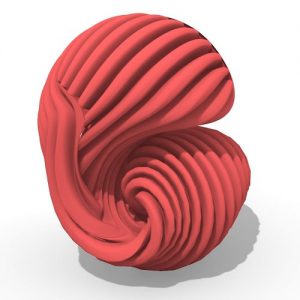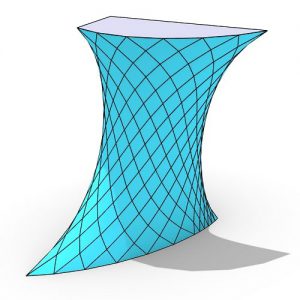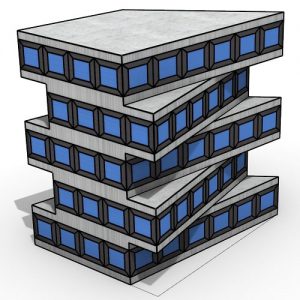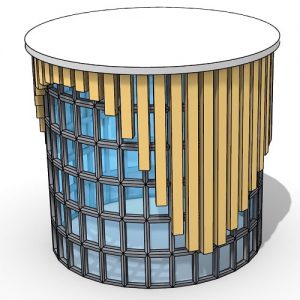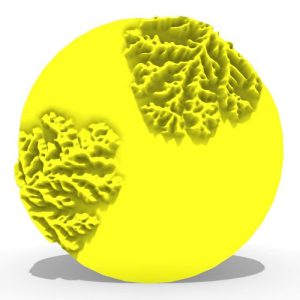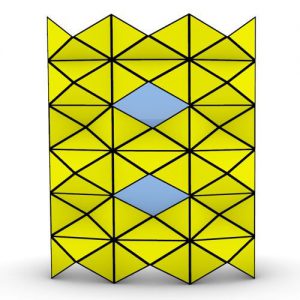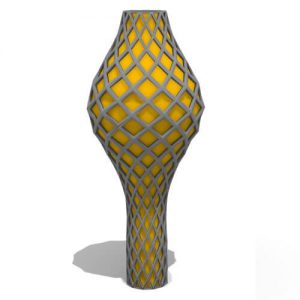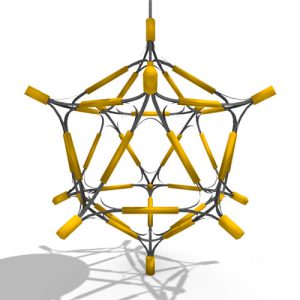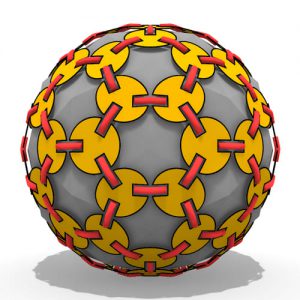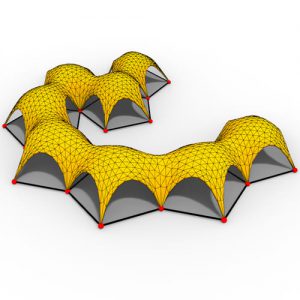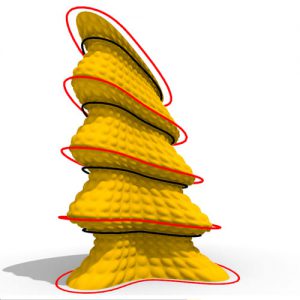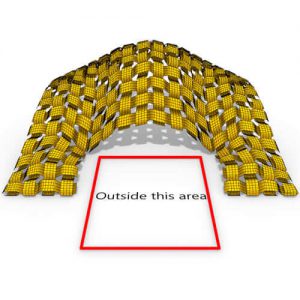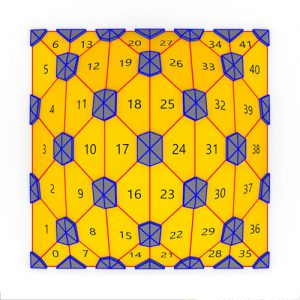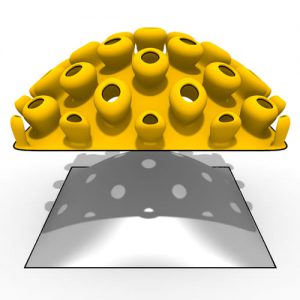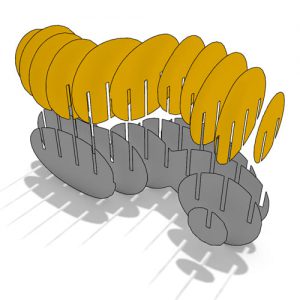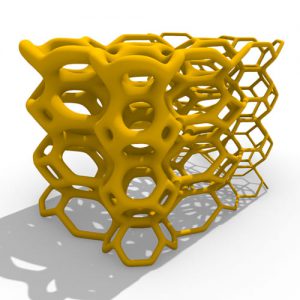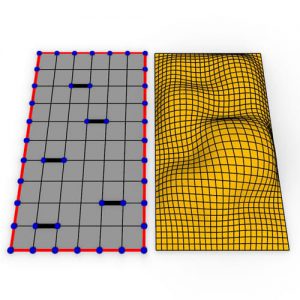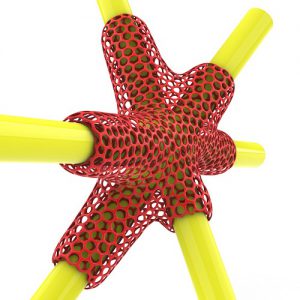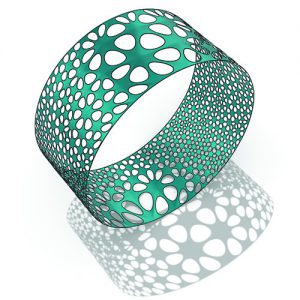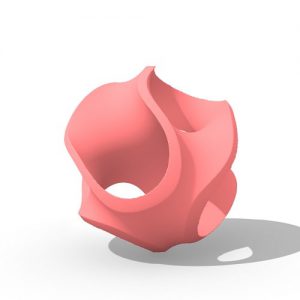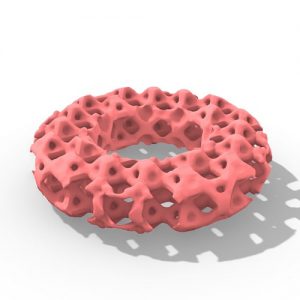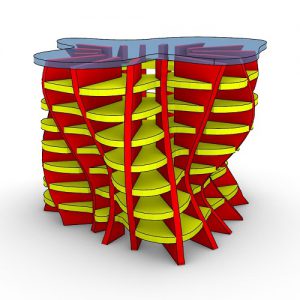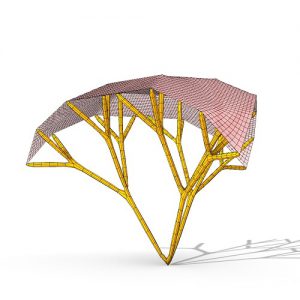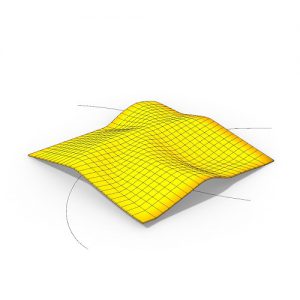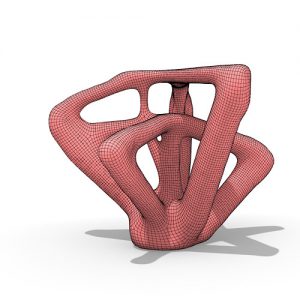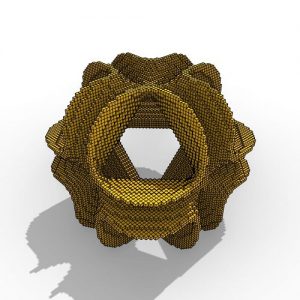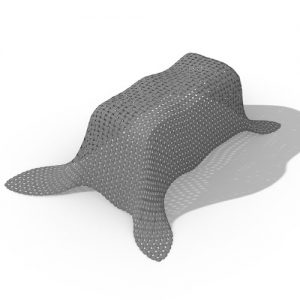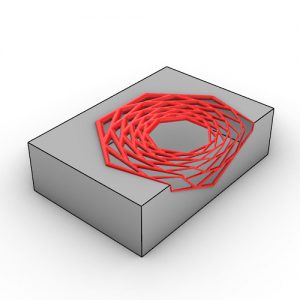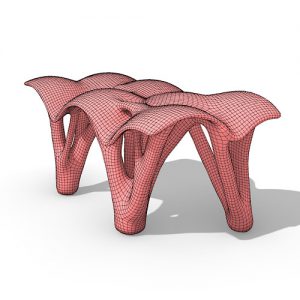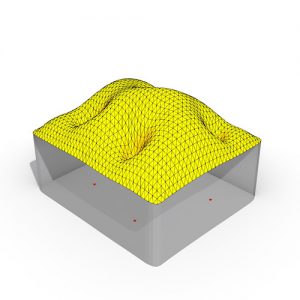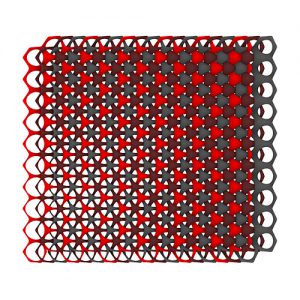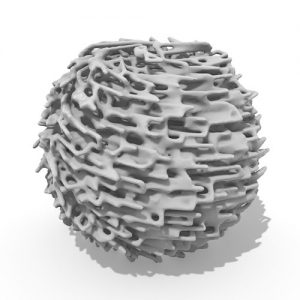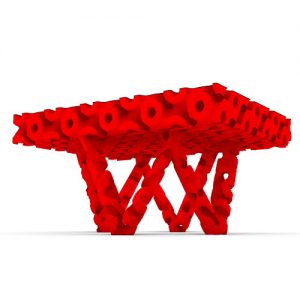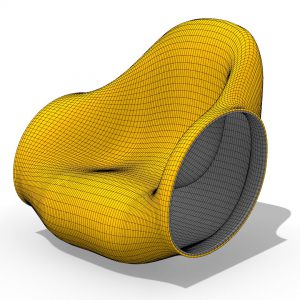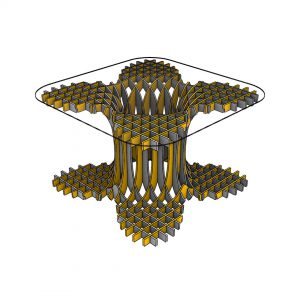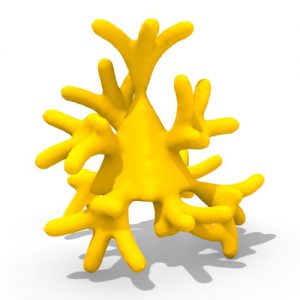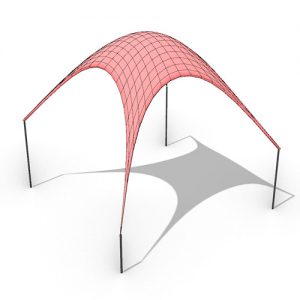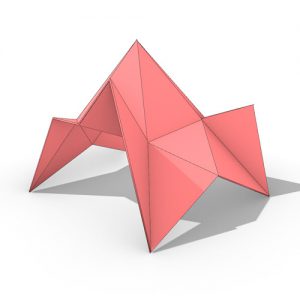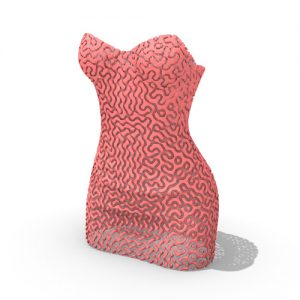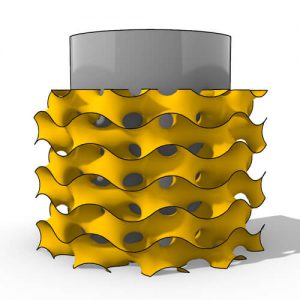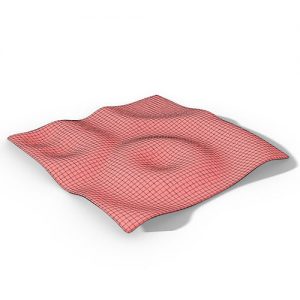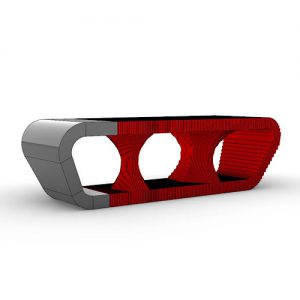In this Grasshopper Weaverbird tutorial, you can twist a mesh and create bumps on it using the Nautilus plugin.
In this Grasshopper example file, you can convert a series of curves into a mesh with a 3d groove pattern using the Nautilus and Weaverbird plugins.
In this Grasshopper example file, you can design a parametric facade using four different techniques.
In this Grasshopper Kangaroo tutorial, we will learn how to model a parametric tower by defining two curves and then diagonalizing the mesh.
In this Grasshopper tutorial, we will generate parametric noise on an icosahedron mesh using the Nautilus plugin.
In this Grasshopper Example file, you can create a bridge between two Brep faces by specifying a connection line and defining the connection rectangle.
In this Grasshopper Architecture tutorial, we will model a parametric building by defining a deformed rectangular plan and combining the floors and roofs of each level.
In this Grasshopper Weaverbird example file, you can create a parametric dress by wrapping ngon meshes around an imported mesh of a body.
In this Grasshopper Architecture tutorial, we will model a parametric facade with vertical elements controlled either by random lengths or a NURBS curve.
In this Grasshopper example file, you can model a fractal-based snowflake pattern on a 3D mesh by defining point attractors.
In this Grasshopper script you can create a parametric facade by rotating a series of windows.
In this grasshopper example file, You can design a Parametric element using a series of deformed circles.
In this grasshopper example file you can create a mirrored polyline from a series of points and then convert it into a mesh.
In this example file you can convert a mesh to a series of diamond panels with thickness and windows.
In this Grasshopper Example File, you can generate a platonic lamp shade by using the graphicstatics plugin.
In this Grasshopper Example File, you can design a Parametric Connection using the kangroo and parakeet plugins.
In this Grasshopper Example File, you can design a parametric tensile Structure using the parakeet and Kangaroo plugins.
In this Grasshopper Weaverbird example file, You can design a parametric tower by using the weaverbird plugin and controlling the shape by a series of curves.
In this example file, You can rotate a series of polygons around a core and create a parametric twisting Tower.
In this kangaroo example file, You can design a parametric tensile structure in a boundary using the Mesh+ and Weaverbird plugin.
In this grasshopper lunchbox example file, You can design a series of parametric panels with connections.
In this example file, You can use the mesh+ & Weaverbird plugin to model a smooth mesh with openings.
In this grasshopper example file, you can use the Droid Plugin to Generate G Code for 3D printing a Mesh.
In this Grasshopper Example File, You can design a parametric tensile roof by using the MINSURFACE plugin.
In this grasshopper example file, you can create a waffle structure by using the dendro plugin to make the Parametric shape.
In this Grasshopper Example File,You can design a parametric mesh by using Box Morph and using the Crystallon plugin.
Now that you have learned how to design a parametric text on a mesh you can use these 3 example files to even learn more.
In this Grasshopper kangaroo example file you can learn how to use the Leopard plugin to select a mesh edge easily in Rhino and then manipulate it in Grasshopper.
In this Grasshopper example file you can learn how to model a parametric pattern based on the Erwin Hauer module.
In this Grasshopper weaverbird example file, you can create a triangular mesh from a SubD surface and then give its borders some offset.
In this Grasshopper Kangaroo example file, you can use the region union component to create a parametric pavilion.
In this Grasshopper weaverbird Example File, you can design a parametric facade by deforming a series of quads and smoothing the final results.
In this Grasshopper Example File, You can model a triangulated lamp shade using the Fennec ,Mesh+ and Kangaroo Plugins.
In this grasshopper parametric joint example file, you can design a mesh as a 3d Joint from a series of Lines
In this Grasshopper Kangaroo example file, you can generate 3d Patterns on a surface by defining point attractors.
In this Grasshoper script, you can use the Axolotl plugin to create a parametric gyroid shell.
In this Grasshoper example file, you can use the Axolotl Plugin to generate Intersecting 3d Patterns.
In this Grasshopper example file, you can convert an image into a mesh using the kangaroo2 plugin.
In this grasshopper example file, you can design a parametric table and extract a series of radial waffle parts from it by using the bowerbird Plugin.
In this Grasshoper example file, you can use the Rabbit plugin to create a series of L-system tree-like structures.
In this Grasshopper example file, you can deform a surface by using a series of curves as attractors.
In this grasshopper example file, you can optimize a set of joints by using the Topos plugin.
In this grasshopper example file, you can use the Legolizer plugin to Generate a series of parametric Lego & Voxels.
In this Grasshopper example file, you can simulate a piece of Cloth behaviour in collision with a solid object using the Kangaroo plugin.
In this grasshopper example file, you can model a Parametric table with a recrusive 3D pattern and by using the Dendro plugin.
In this grasshopper example file, you can optimize a set of pillars for a roof using the Topos plugin.
In this grasshopper example file, you can create a parametric inflated roof by using the Kangaroo plugin.
In this grasshopper example file, you can design a 3d hexagonal grid on a surface by using the WeaverBird plugin.
In this grasshopper example file, you can design a 3d parametric grid on a sphere by using the Dendro plugin.
In this grasshopper example file, you can design a parametric table with a Gyroid pattern by using the Axolotl plugin.
In this grasshopper parametric chair example file, You can design a chair by defining a series of curves and using the Pufferfish and Weaverbird plugins .
In this Grasshopper example file, you can design a waffle table by using the Bowerbird plugin.
In this grasshopper example file, you can design a parametric ngl System by using the Weaverbird , Dendro and Rabbit plugins.
In this grasshopper kangaroo example file, you can simulate an elastic material by using the Kangaroo anchor component.
In this Grasshopper example file, You can model a simple parametric pavilion using the TPS plugin.
In this Grasshopper example file, you can create a lattice pattern on a dress by using the Axolotl plugin.
In this grasshopper example file, you can design a Gyroid pattern by using the Millipede, Pufferfish and Weaverbird plugins.
In this Grasshopper example file, You can deform a mesh with an attractor using the Pufferfish plugin.
In this Grasshopper script, you can design a parametric Voxelized Table by using the Sasquatch plugin.



